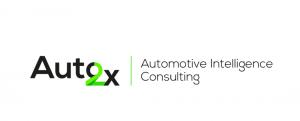
Autonomous Driving Software Stack Benchmark: Tesla vs. Mercedes-Benz, Bosch vs. Continental

Auto2x benchmarked major carmakers and suppliers based on their Autonomous Driving Software Stack capabilities and in-house vs. outsourcing approaches.
LONDON, UNITED KINGDOM, February 24, 2025 /EINPresswire.com/ -- A new report by Auto2x "Autonomous Vehicles Competitor Analysis: Carmakers, Suppliers & Start-ups" analysed the Autonomous Driving Software Stack of major automakers and suppliers to shed light on buy vs. build decisions, support partnership scouting and strategic planning for investment, strategy and innovation teams.
The analysis covers major carmakers, such as Mercedes-Benz, BMW, Tesla, Volkswagen, innovators like NIO and XPeng, major Tier-1 suppliers like Bosch, Continental, Denso, Valeo and Mobileye.
The benchmarking cover all relevant technological domains and strategies for the major suppliers to help assess their competencies, including:
- Sense (Perception, Fusion), Plan (Motion Path Planning), Act
- capabilities in ADAS & Autonomous Driving Perception Software (Radar, Vision, Localization, Mapping, Sensor Fusion, L4 system Algorithm, Planner, OS, ADAS ECUs)
- Features (Driver Assistance, Cruising, Parking)
- Middleware, compute platform, AI/ML
- EE Architectures (zonal, distributed)
- Regional differences (e.g. different offerings and suppliers in China)
- In-house capabilities, partner ecosystem, OEM in-house movements
- Business model these Tier 1s
The insights from this study help developers, strategy and investment teams make informed decisions about the integration of advanced autonomous driving software technologies, allocate R&D and development budgets and assess the competence of suppliers.
KEY FINDINGS
The automotive industry is undergoing an unprecedented shift of value-add from Hardware to Software, which is described by Software-Defined Vehicles to support Automated Driving. Today, the majority of industry revenues from ADAS (Advanced Driver Assistance Systems) come from sales of hardware, mostly radar, camera and ultrasonic sensors.
However, carmakers like Tesla who pioneered SOTA (Software-over-the-Air) updates for their FSD Features-on-Demand, have started realising significant revenues. In the shift from software to hardware, control over the Autonomous Driving Software Stack is crucial to monetise the new revenue pools and enhance product differentiation.
Auto2x analysed the strategies companies are pursuing in the autonomous driving software stack domain, especially in-house software development vs. outsourcing or hybrid approaches.
In-house development:
Tesla pursues a vertically integrated approach by developing in-house hardware and software stacks. This strategy allows them to optimize for tight integration between components, ensuring better system performance and quicker iteration cycles. Tesla's FSD (Full Self-Driving) system exemplifies this strategy, featuring proprietary chips and neural networks tailored to their vehicles.
This approach is preferred by suppliers for retaining long-term competitive advantages and proprietary control. This approach often suits companies with the scale and resources to sustain high R&D costs.
Outsourcing and partnership model:
Baidu is working with Chinese carmakers to integrate localized, cutting-edge Level 4 software supported by Apollo platform and massive simulation data. Key technologies include the Apollo Self Driving V2.0, deep learning-based environment perception.
Effective for suppliers with limited software expertise or those entering the market rapidly. Mobileye’s solutions dominate this space, providing ready-to-integrate platforms
Hybrid approach:
Plus collaborates with global OEMs like TRATON for commercial trucking. Their transformer-based SuperDrive platform supports multi-modal sensor fusion.
Emerging as a dominant strategy for suppliers balancing cost, time, and control. Partnerships, like Magna's collaborations with Waymo, showcase this trend by combining strengths.
Contact us for more information, including sample pages.
Mariola Skoczynska
Auto2x LTD
gs@auto2xtech.com
Distribution channels: Automotive Industry, Banking, Finance & Investment Industry, Business & Economy, Companies, Conferences & Trade Fairs, Electronics Industry, International Organizations, Law, Manufacturing, Media, Advertising & PR ...
Legal Disclaimer:
EIN Presswire provides this news content "as is" without warranty of any kind. We do not accept any responsibility or liability for the accuracy, content, images, videos, licenses, completeness, legality, or reliability of the information contained in this article. If you have any complaints or copyright issues related to this article, kindly contact the author above.
Submit your press release
